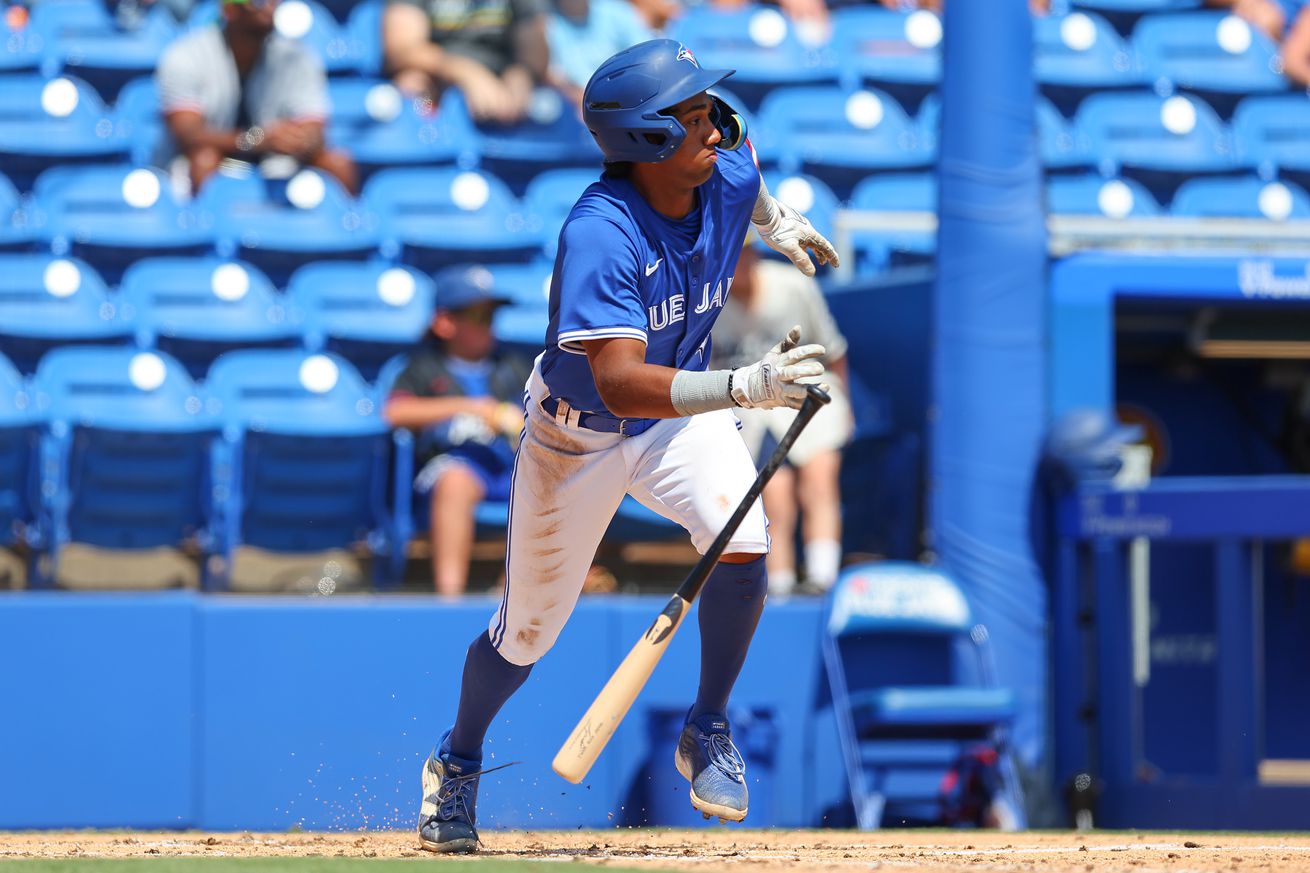
Back at the top of the farm system this week, because when a top prospect spends two weeks posting an OPS over 1.000 it demands comment.
Arjun Nimmala didn’t get off to a slow start with A+ Vancouver this season. Through the team’s first three series, his .278/.339/.463 slash line would be perfectly respectable for anyone and was genuinely impressive for a 19 year old. Since then, though, he’s been on fire. Over the last 10 games, he’s hit .317/.417/.659 with just a 14% strikeout rate. He has six extra base hits against seven strikeouts in that stretch, four of them home runs.
The strikeout rate, in particular, will be big for him and will bear watching going forward. Nimmala is a capable shortstop (both Matt and I noted when putting the prospect list together that we’d been surprised by how smooth he looks with the glove for a player who’s supposed to be all raw talent), and his power has shown up as promised since basically the day he set foot on a minor league field. If anything is going to hold him back from becoming a star, it’s his tendency to swing and miss.
Early last season, he looked a little overwhelmed against A ball pitching, running a 34% strikeout rate through mid-May. That was a little concerning, but wasn’t a major knock given the context. Full season ball was an aggressive assignment for a young 18 year old, and especially for one like Nimmala who’d come relatively lately to baseball and didn’t have the years of polishing on the top end showcase circuit that many high school first rounders do. He fared much better after his adjustment, posting an .895 OPS following his return to Dunedin, but still ran a strikeout rate just under 30% and needed an aggressive approach at the plate to keep it even that low. For the season, he made contact with 69.9% of his swings. That’s low enough to be of concern, especially since the tendency is to miss more often as a player climbs the ladder and faces more advanced pitching.
It’s possible to succeed with a contact rate that low, although it puts a lot of weight on other offensive skills. Of 240 qualified MLB hitters over the past three and a quarter seasons, 12 have run contact rates below 70% while delivering above average production, with the lowest contact rate in that group being Luke Raley’s 65.2%. So there’s relatively little room for slippage in Nimmala’s contact rate as he faces better pitching on his way up through the minors.
The thing all those productive low contact hitters have in common is that they hit the ball very hard when they do make contact, with StatCast barrel rates of at least 11% compared to the league’s 7.8%. Old friend Teoscar Hernandez is typical of the kind of hitters who make that approach work. His swing is aggressive and geared for lift. He actually has solid plate discipline but doesn’t walk often because he swings relatively aggressively, not being in a position to recover from watching a hittable pitch go by.
Nimmala has the tools to copy that approach. He has some power now, and looks likely to wind up with plus or even 70 grade raw once his body finishes maturing. His swing is also geared to let that power play in games. He pulls more than half his balls in play, and makes a lot of contact at dangerous angles with both ground ball and a pop up rates that are below average. Line drives and low flies to the pull side are where damage happens, and Nimmala’s approach generates a lot of them. He also has the beginnings of an approach, which is an advance from earlier last season. He still doesn’t walk a ton, but he seems to have a plan and know what he wants to swing at. You can imagine him winding up as a SLG over OBP hitter who manages to be solidly above league average overall, and guys who do that while playing up the middle are very good players if not all stars.
All that said, it would make his path significantly easier if he could get his contact rate into even the low 70s. It would round out his offensive profile a bit, and put less pressure on maximizing his in-game power production at all times to float his batting line. It would even help his walk rates, probably, by making it a little more dangerous for pitchers to just stay on the attack at all times.
When I checked in on him early in the season, his contact rate was down slightly, in the 68% range. It’s come up significantly in the past couple of weeks, though, and now sits at 72.4%. Visually, he looks more dialed in, and I think his approach is maturing from last year. Unfortunately StatCast data from the Northwest League isn’t publicly available, so I can’t do a deeper dive into how his approach and contact profile have changed. The overall trend is very positive, although even though contact rates stabilize very quickly the sample remains small. If he maintains or even extends his gains over the next month or two, it will be a big step towards removing the lone red flag on his prospect profile, and by the end of the season he would have the potential to be a top 20 prospect in the game.